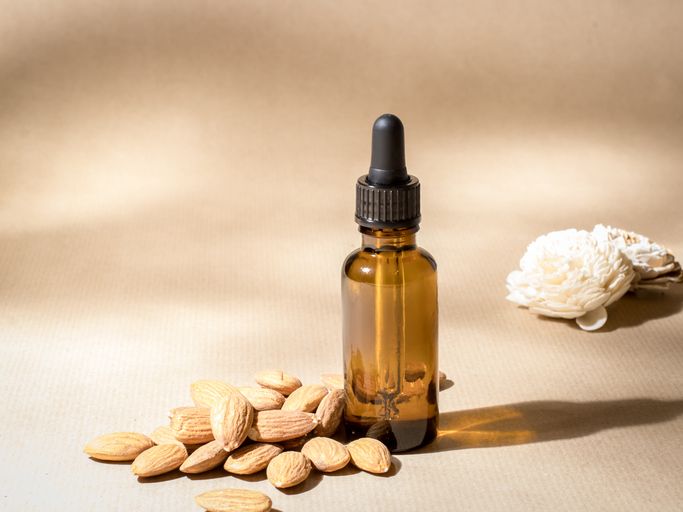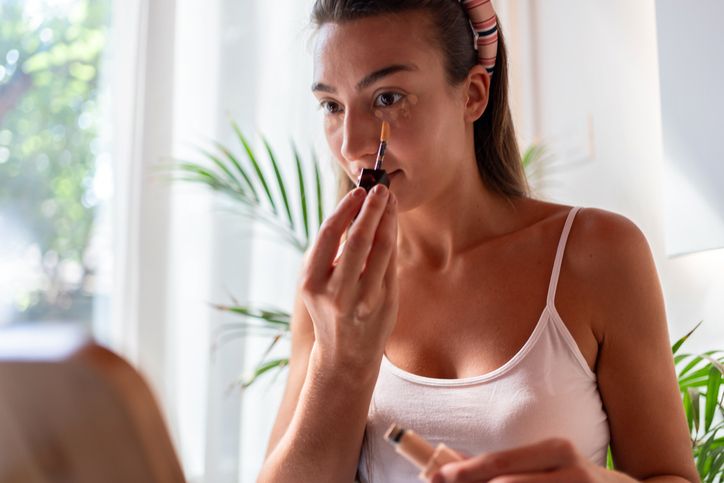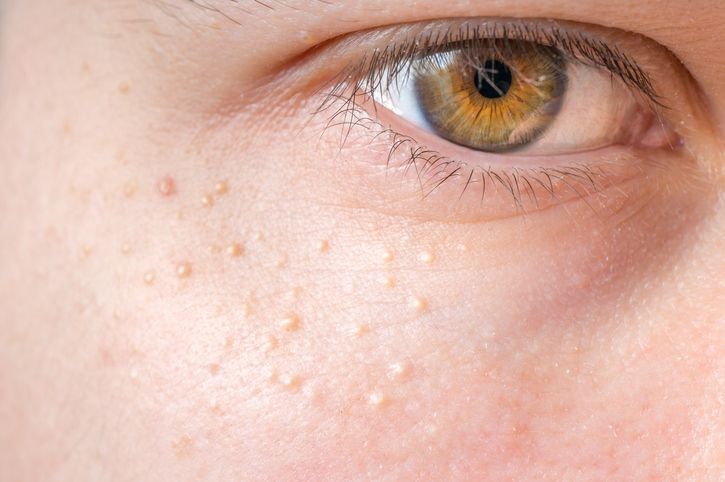- Home
- Trend
- Weight Loss Strategies
- Acne Tips
- Hair Health Information
- Blemish Removal Tips
- Acne Scar Removal Tips
- Muscle Building Techniques
- Intimate Care Tips
- Postpartum Intimate Care
- Eye Bags Wiki
- Tips for Face Slimming
- Secret of Permanent Hair Removal
- Breast Enlargement Tips
- Cure to Snoring
- Marionette Lines
- Skin-Tightening Secrets
Crown thinning is one of the first noticeable signs of hair loss, especially for those experiencing male pattern baldness. While most people are familiar with the impact of genetics and DHT (dihydrotestosterone) on hair thinning, there are several hidden factors that aren’t often discussed but play a crucial role in exacerbating crown thinning.
The Hidden Factors Contributing to Crown Thinning
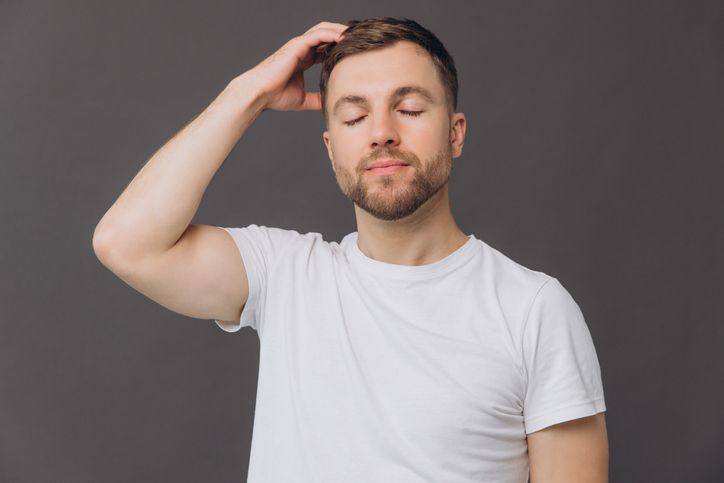
Crown thinning is a common and often distressing issue, especially for those dealing with male pattern baldness. While many are quick to assume that genetics or aging are the sole culprits, there are several hidden factors that may contribute to thinning hair at the crown.
Known Factors
1. Hormonal Imbalances: The Role of DHT
One of the most significant yet often overlooked factors in crown thinning is the influence of hormones, particularly dihydrotestosterone (DHT). This hormone, a derivative of testosterone, plays a key role in the development of male pattern baldness. DHT causes hair follicles to shrink over time, which leads to thinning hair and, eventually, hair loss in specific areas, including the crown.
• DHT binds to androgen receptors in hair follicles, leading to their miniaturization.
• As hair follicles shrink, the growth cycle shortens, leading to thinner, weaker hair.
• Eventually, affected follicles may stop producing hair altogether, contributing to bald spots and noticeable thinning, particularly at the crown.
For many individuals, the presence of high DHT levels accelerates male pattern hair loss (androgenetic alopecia), with crown thinning being one of the first visible signs. Hormonal imbalances, whether due to genetics, lifestyle, or health conditions, can significantly exacerbate this process.
2. Poor Circulation and Blood Flow to the Scalp
Another often-overlooked factor is poor circulation. The scalp, like any other part of the body, relies on an adequate supply of oxygen and nutrients through healthy blood flow to maintain healthy hair follicles. When circulation is reduced, hair follicles receive fewer nutrients and oxygen, leading to weakened hair strands and slower regrowth.
• Limited blood flow means hair follicles don’t receive the nutrients required for healthy hair growth.
• Weak follicles become more prone to damage, and new hair may fail to grow or fall out prematurely.
• Poor circulation can also result in bald patches or noticeable thinning at the crown, as hair growth becomes less efficient.
Increasing blood flow to the scalp is essential for promoting healthy hair follicles and encouraging hair growth. This can be achieved through scalp massages, improving overall circulation, or treatments designed to stimulate blood flow.
Hidden Factors
3. Nutrient Deficiencies
What you eat plays a vital role in maintaining healthy hair follicles. Nutrient deficiencies can have a major impact on hair growth, and certain vitamins and minerals are essential for maintaining the density and thickness of hair at the crown. Lack of adequate nutrition can lead to hair thinning and exacerbate existing hair loss.
• Iron: Essential for carrying oxygen to hair follicles. A deficiency can lead to hair shedding and thinning.
• Zinc: Crucial for hair tissue growth and repair. Zinc deficiency can lead to hair loss and slow regrowth.
• Vitamin D: Deficiency has been linked to hair loss and thinning, especially in the crown area, as it helps in the creation of new follicles.
• Biotin and B-vitamins: These vitamins support hair growth cycles and promote hair strength.
A balanced diet rich in vitamins and minerals is essential for promoting healthy hair growth and preventing hair thinning. In some cases, supplementation may be necessary to address specific deficiencies.
4. Stress and Lifestyle Factors
Stress is another often-missed factor contributing to crown thinning. High levels of stress trigger the release of cortisol, a hormone that can disrupt the normal hair growth cycle. This disruption leads to a condition called telogen effluvium, where hair prematurely enters the shedding phase.
• Cortisol can interfere with the anagen phase of the hair growth cycle, causing follicles to shed prematurely.
• Chronic stress increases the likelihood of hair thinning at the crown, as the stress response continues over an extended period.
• Stress can also worsen existing hair loss conditions, such as androgenetic alopecia, leading to a receding hairline or thinning crown.
In addition to stress, unhealthy lifestyle practices such as smoking, poor diet, and lack of sleep can negatively affect hair health. Making positive lifestyle changes can help improve hair quality and reduce thinning at the crown.
5. The Role of Male Sex Hormones in Crown Thinning
Male pattern baldness is primarily driven by male sex hormones, especially testosterone and its derivative, DHT. These hormones play a central role in hair growth and loss, particularly in areas like the crown and temples. As testosterone levels fluctuate, the impact on hair follicles can become more pronounced, particularly in those genetically predisposed to hair thinning.
• DHT binds to hair follicles and causes them to shrink, leading to the miniaturization of hair strands.
• Over time, these follicles can become dormant, leading to permanent hair loss.
• The effect is most visible in areas like the crown, where the hair may start to thin and bald spots may appear.
6. Medical Conditions and Medications
Certain medical conditions and medications can also contribute to crown thinning. Conditions like alopecia areata, thyroid disorders, and even autoimmune diseases can cause hair loss or disrupt the normal hair growth cycle.
Additionally, medications for high blood pressure, depression, and other health conditions can have side effects that include hair thinning or hair loss. It’s important to consult a medical professional if thinning hair coincides with new medications or health issues.
7. The Impact of Aging on Hair Health
As we age, our bodies undergo various changes, and aging hair follicles may not be as effective at growing healthy, thick hair. The hair growth cycle slows down, and existing hair follicles can shrink, resulting in thinning crown areas or bald spots.
• The production of natural oils decreases, which can dry out the scalp and hair.
• Follicles shrink over time, leading to finer, thinner hair strands.
• Reduced collagen production and weaker hair structure contribute to more noticeable thinning or hair loss, particularly at the crown.
While aging is inevitable, it’s possible to slow down the effects on hair by using treatments that stimulate the follicles and promote healthier hair growth.
The Limitations of Traditional Hair Loss Treatments
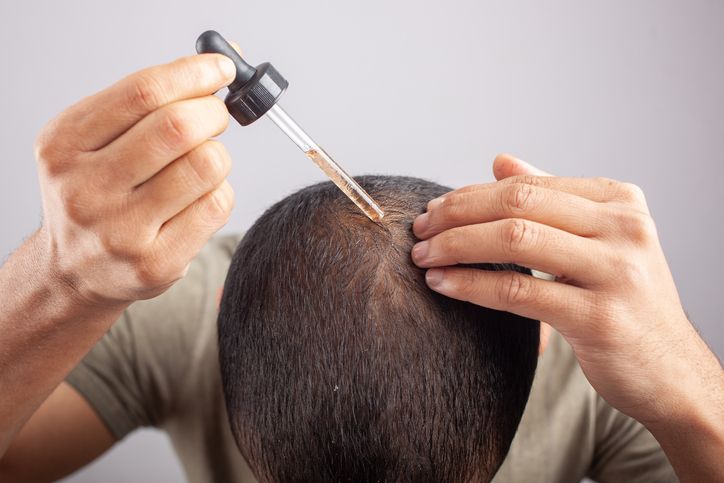
Many individuals who notice thinning hair at the crown often turn to traditional hair loss treatments. While treatments like minoxidil are widely available and commonly used, these solutions may not provide the long-term results that people expect. Furthermore, traditional treatments often address only the surface-level symptoms of hair thinning without tackling the root causes of hair follicle damage.
The Shortcomings of Topical Treatments
Topical treatments, including minoxidil, are popular options for individuals dealing with hair thinning or loss. These products are designed to stimulate hair growth by increasing blood flow to the scalp or promoting follicular activity. Minoxidil, for instance, can help some users regrow hair, but the results are often temporary and inconsistent. In many cases, the hair growth is not dense or permanent, and once the treatment is stopped, hair loss typically resumes.
• Temporary Results: While topical treatments may promote some regrowth, they do not address the underlying causes of hair thinning, such as hormone imbalances or shrinking hair follicles.
• Surface-Level Solutions: These treatments only impact the hair's external condition and fail to stimulate healthy follicle regeneration or promote sustainable hair growth.
• Inconsistent Effectiveness: Not everyone responds positively to topical treatments, and results can vary widely from person to person.
For many individuals experiencing crown thinning, these treatments offer limited, temporary relief rather than a lasting solution. They do not fully restore hair density or combat the deeper issues contributing to hair loss.
Hair Transplant Surgery: An Invasive Solution
Another popular method to restore hair is hair transplant surgery, specifically techniques like follicular unit extraction (FUE). This procedure involves transplanting healthy hair follicles to areas of the scalp affected by thinning or bald spots. While hair transplant surgery can offer permanent results by restoring hair density, it may not be the ideal option for everyone. Drawbacks of hair transplant surgery:
• Expensive Procedure: Hair transplant surgery can be costly, making it an impractical option for many individuals seeking affordable hair loss solutions.
• Recovery Time: After undergoing surgery, there is a required recovery period where individuals may experience discomfort, swelling, or scabbing. This can be a significant downside for those looking for a faster solution.
• Not Suitable for Everyone: If a person has diffuse thinning throughout the scalp or insufficient donor hair, hair transplant surgery may not be the right option. Additionally, for those in the early stages of male pattern baldness, the transplant may not be effective until hair loss has stabilized.
Though FUE can restore hair in certain areas, the procedure does not prevent hair loss from continuing in other regions. If there are still underlying causes of hair thinning, such as DHT buildup, hormonal imbalances, or poor scalp circulation, a hair transplant may not stop the process entirely.
The Core Issue: Shrinking Hair Follicles and Underlying Causes
One of the most significant limitations of traditional hair restoration methods is that they fail to address the root causes of hair thinning. For example, while a hair transplant can replace hair follicles in thinning areas, it doesn’t treat the reason why those follicles became damaged or weak in the first place.
Therefore, relying solely on traditional treatments like hair transplants or topical solutions might not be enough to ensure long-term success. A more comprehensive approach that targets the underlying causes of crown thinning is often necessary for sustainable hair restoration.
免費體驗
F8 Hair Regrowth Treatment
1 Minute Self-Registration
Date should not be before minimal date
F8 Hair Regrowth Treatment: The Non-Surgical Alternative to Crown Thinning
Crown thinning is a common issue for many, but finding the right solution doesn’t always have to involve invasive surgery. F8 Hair Regrowth Treatment offers a non-surgical, innovative alternative to combat hair thinning at the crown.
How F8 Works to Combat Crown Thinning
F8 Hair Regrowth Treatment targets the root causes of crown thinning, focusing on reduced circulation and hair follicle damage. Unlike traditional hair transplant surgery, which relocates hair follicles to balding areas, F8 focuses on rejuvenating existing hair follicles. This non-invasive treatment works with your natural hair growth cycle, allowing you to restore and stimulate your hair without the need for surgery.
Stimulating Blood Flow: The low-energy laser therapy used in F8 enhances blood circulation in the scalp, which improves the delivery of essential nutrients and oxygen to the hair follicles. This increased blood flow helps optimize the environment for hair growth, ensuring that the follicles receive the necessary elements to support healthy and stronger hair.
Rejuvenating Hair Follicles: F8 works by stimulating hair follicles that may have become weakened or inactive due to various factors, such as hormonal imbalances or poor circulation. This stimulation helps restore the health of the follicles, encouraging them to enter the active growth phase and resulting in thicker, fuller hair over time.
Laser Therapy for Follicle Health: F8 is particularly effective in addressing the shrinkage of hair follicles caused by DHT (dihydrotestosterone), a hormone linked to hair thinning. By targeting these shrinking follicles, the low-energy laser therapy works to restore their size and functionality, allowing them to regenerate and support healthier hair growth.
No Surgery, No Downtime: One of the key advantages of F8 is that it provides a non-invasive solution to hair thinning and loss. Unlike hair transplant surgery, which requires significant recovery time and has associated risks, F8 offers a safe, effective alternative without the need for surgery. This means you can resume your daily activities immediately after treatment, with no downtime or lengthy recovery period.
If you're noticing thinning hair at the crown or any early signs of balding, F8 Hair Regrowth Treatment can be an effective solution to prevent further hair loss and promote healthy hair growth.
Start Your Journey to a Fuller Hair
Don’t wait until crown thinning progresses to permanent hair loss. Early intervention is crucial, and F8 Hair Regrowth Treatment can help promote hair regrowth and improve hair density without the need for invasive surgery.
Contact us today to discuss your options for stimulating hair growth and promoting healthy hair follicles. With the right treatment, you can restore your confidence and achieve fuller, thicker hair at the crown.
F8 Hair Regrowth Treatment免費體驗
F8 Hair Regrowth Treatment
1 Minute Self-Registration
Date should not be before minimal date
FAQ

1. What are the most effective methods for promoting hair growth and preventing further crown hair thinning?
To promote hair growth and prevent further crown hair thinning, it's essential to address both the underlying causes and symptoms. Non-invasive treatments like F8 Hair Regrowth Treatment use low-energy laser therapy to stimulate hair follicles, improving blood circulation and encouraging healthy hair growth. Maintaining a balanced diet, reducing stress, and using topical treatments like minoxidil can also help promote hair regrowth.
2. Can a FUE hair transplant help restore hair in areas with noticeable bald spots or a balding crown?
Yes, FUE (Follicular Unit Extraction) hair transplants can restore hair in areas with noticeable bald spots or a balding crown. This surgical method involves extracting healthy hair follicles from a donor area and implanting them into the thinning or bald spots. FUE is particularly effective for individuals with localized crown bald spots or receding hairlines, and it offers permanent results. However, it may not be suitable for those who are still experiencing early-stage hair thinning, as it focuses on transplanting healthy follicles rather than stimulating existing ones.
3. How can those who are experiencing male hair loss combat crown bald spots and prevent damage to their hair follicles?
For people experiencing male hair loss, addressing crown bald spots and preventing further damage to hair follicles is crucial. Starting early with treatments that stimulate hair growth, such as low-level laser therapy or platelet-rich plasma (PRP) therapy, can be highly effective.
4. Is it possible to increase hair growth and avoid becoming completely bald by addressing crown thinning early on?
Yes, it is possible to increase hair growth and prevent complete baldness by addressing crown thinning early on. Early intervention is key to preserving healthy hair follicles and stimulating the hair growth cycle. Non-surgical treatments, like F8 Hair Regrowth Treatment, can help improve blood circulation, revitalize hair follicles, and promote natural hair regrowth.
5. What are the benefits of F8 Hair Regrowth Treatment for those dealing with crown thinning or a noticeable bald spot?
F8 Hair Regrowth Treatment offers several benefits for individuals dealing with crown thinning or a noticeable bald spot. Unlike invasive procedures like FUE hair transplants, F8 uses non-surgical, medical-grade low-energy laser therapy to stimulate hair follicles and improve blood circulation in the scalp. This helps promote healthy hair growth and rejuvenates existing hair follicles. The treatment is ideal for individuals in the early stages of crown hair thinning, as it encourages hair regrowth without the need for surgery.






